
NONLINEAR PROCESSES IN GEOPHYSICS
Scope & Guideline
Advancing Geophysical Knowledge Through Nonlinear Insights
Introduction
Aims and Scopes
- Nonlinear Dynamics in Geophysical Systems:
The journal extensively covers the application of nonlinear dynamics to understand complex geophysical processes such as atmospheric phenomena, ocean dynamics, and climate systems. - Data Assimilation Techniques:
A significant focus on the development and application of data assimilation methods, integrating observational data into models to enhance forecasting and understanding of geophysical systems. - Modeling and Simulation:
Emphasis on advanced modeling techniques, including machine learning and statistical methods, to simulate and predict geophysical events and processes. - Interdisciplinary Approaches:
Encouragement of research that bridges various disciplines within geophysics, such as meteorology, oceanography, and climatology, to address complex environmental challenges. - Quantitative Analysis:
Utilization of quantitative methods, including statistical analyses and computational algorithms, to extract meaningful insights from geophysical data.
Trending and Emerging
- Machine Learning and AI Applications:
An increasing number of studies are applying machine learning and artificial intelligence to enhance data assimilation, modeling, and prediction capabilities in geophysics, showcasing the integration of computational advancements into traditional geophysical research. - Complex Network Theory:
Emerging interest in utilizing complex network theory to analyze and model interactions within geophysical systems, providing new insights into the dynamics of climate and weather phenomena. - Quantum Data Assimilation:
Recent publications have begun exploring the application of quantum computing techniques to data assimilation problems, indicating a significant shift towards innovative computational approaches in handling large datasets. - Multiscale and Multivariate Analysis:
There is a growing focus on multiscale and multivariate analyses that consider interactions across different spatial and temporal scales, reflecting a trend towards comprehensive understanding of complex geophysical systems. - Climate Change Impact Studies:
Research addressing the impacts of climate change on various geophysical processes has gained prominence, highlighting the urgency and relevance of this theme in current scientific discourse.
Declining or Waning
- Traditional Linear Models:
There has been a declining interest in purely linear modeling approaches as researchers increasingly adopt nonlinear and complex systems methodologies to capture the dynamics of geophysical processes. - Localized Case Studies:
The trend towards broader, global-scale analyses may indicate a waning interest in localized case studies, which were previously more common, as researchers seek to understand universal principles applicable across different geophysical contexts. - Simplistic Predictive Models:
The use of simplistic predictive models without incorporating complex interactions and feedback mechanisms appears to be decreasing, as the focus shifts towards more sophisticated, integrative modeling techniques.
Similar Journals
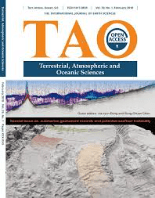
TERRESTRIAL ATMOSPHERIC AND OCEANIC SCIENCES
Unveiling Connections Between Land, Air, and SeaTERRESTRIAL ATMOSPHERIC AND OCEANIC SCIENCES, published by SpringerNature, is a distinguished peer-reviewed journal that has been an essential platform for innovative research in the fields of atmospheric science, oceanography, and Earth and planetary sciences since its inception. With an Open Access policy established in 1990, the journal ensures wide dissemination of knowledge, allowing researchers, professionals, and students to access cutting-edge findings without restrictions. Based in Switzerland and featuring a comprehensive coverage from 1996 to 2024, the journal currently holds a Q3 ranking across various categories, indicating its growing significance in the scientific community. Although it is positioned within the 39th percentile in Earth and Planetary Sciences, its commitment to fostering high-quality research makes it a valuable resource for advancing understanding of terrestrial environments and their interconnections. Researchers seeking a platform for their work in atmospheric and oceanic sciences will find TERRESTRIAL ATMOSPHERIC AND OCEANIC SCIENCES to be an ideal venue for sharing their insights with a global audience.
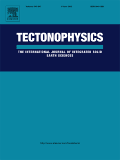
TECTONOPHYSICS
Fostering Groundbreaking Discoveries in GeophysicsTECTONOPHYSICS is a leading journal published by Elsevier that has been at the forefront of earth and planetary sciences since its inception in 1964. With both its print and e-ISSN identifiers (0040-1951 and 1879-3266), the journal offers a reputable platform for disseminating high-quality research in Earth-Surface Processes and Geophysics, proudly positioned in the Q1 category for both fields in 2023. With a Scopus ranking of #43 out of 179 in Earth-Surface Processes and #43 out of 165 in Geophysics, TECTONOPHYSICS demonstrates a strong impact, making it an essential resource for researchers and professionals involved in the geological and geophysical sciences. Published in the Netherlands, TECTONOPHYSICS is committed to advancing knowledge in tectonics and related disciplines, fostering innovative research that impacts our understanding of Earth's dynamic processes. The journal invites contributions that push the boundaries of science, making it a must-read for academia and industry alike.
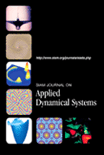
SIAM JOURNAL ON APPLIED DYNAMICAL SYSTEMS
Exploring the Intersection of Theory and Practice in Dynamics.SIAM Journal on Applied Dynamical Systems, published by SIAM Publications, stands as a premier platform for disseminating vital research in the fields of applied dynamical systems, analysis, and modeling and simulation. With a commendable impact factor reflecting its scholarly influence, this journal ranks in the Q1 category for both analysis and modeling/simulation in 2023, positioning it among the top resources in these disciplines. Enthusiastic researchers, professionals, and students will benefit from its rigorous peer-reviewed content that spans innovative methodologies and applications in various scientific domains. Since its inception in 2002 and continuing through 2024, the journal aims to bridge theoretical insights with practical challenges, facilitating advancements that drive progress in dynamical systems research. Contributors and readers alike can expect to engage with high-quality articles that foster meaningful dialogue, making this journal an indispensable resource for the academic community.

Acta Geophysica
Exploring Earth's Secrets, One Study at a Time.Acta Geophysica is a distinguished peer-reviewed journal published by Springer International Publishing AG, focusing on the dynamic field of Geophysics. With an ISSN of 1895-6572 and an E-ISSN of 1895-7455, this journal stands as a critical platform for disseminating cutting-edge research and advancements from 2006 to 2024. Acta Geophysica maintains a respectable impact factor, reflecting its contribution to the global scientific community, where it ranks in the Q2 category within Geophysics, and is positioned 55 out of 165 in Scopus' Earth and Planetary Sciences, placing it in the 66th percentile. Based in Switzerland, the journal invites submissions that address a diverse range of topics, including seismic studies, geodynamics, and climate change impacts, thereby fostering in-depth discussions and innovative solutions in geophysical research. Access to the journal's content is offered through subscription-based options, ensuring a sustainable model for high-quality scientific exchange. By connecting researchers, professionals, and students, Acta Geophysica plays a vital role in advancing the understanding of Earth's processes and contributing to the field's evolution.
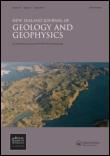
NEW ZEALAND JOURNAL OF GEOLOGY AND GEOPHYSICS
Deepening Understanding of Earth's Dynamic Systems.NEW ZEALAND JOURNAL OF GEOLOGY AND GEOPHYSICS, published by Taylor & Francis Ltd, stands as a prominent forum dedicated to the interdisciplinary exploration of geological and geophysical phenomena. With an impact factor that situates this journal in the prestigious Q1 category across key subjects—namely Earth and Planetary Sciences, Geology, and Geophysics—it is a critical resource for researchers, professionals, and students alike. The journal has been operational since 1958 and continues to contribute valuable insights into the complexities of the Earth's processes. Although it does not currently offer Open Access options, its broad readership benefits from an extensive archive of high-quality research findings that span from 1958 to 2024. Located in the United Kingdom, the journal remains a pivotal player in advancing the understanding of Earth's systems, making significant contributions to both academic inquiry and practical applications in the field.

Geofisica Internacional
Unlocking Earth's Secrets Through Open Access ScholarshipGeofisica Internacional, an esteemed academic journal published by the Instituto de Geofísica at UNAM, Mexico's prestigious National Autonomous University, has been a pivotal platform for advancing the field of geophysics and energy studies since its inception in 1975. This Open Access journal aims to disseminate high-quality research findings, making significant contributions to our understanding of Earth's processes and energy resources. With a current impact factor that situates it in the Q3 category for both Energy (miscellaneous) and Geophysics, it provides a continuous dialogue for researchers, professionals, and students interested in the intersection of these critical areas. Based in Mexico City and publishing articles that span various geophysical disciplines, Geofisica Internacional is indispensable for anyone seeking to stay at the forefront of environmental and energy research.
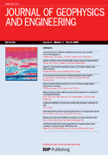
Journal of Geophysics and Engineering
Transforming Geophysical Knowledge into Engineering PracticeJournal of Geophysics and Engineering, published by Oxford University Press, stands as a pivotal platform for the dissemination of innovative research in the interdisciplinary fields of geology, geophysics, and engineering. Since its inception in 2004, this Open Access journal has focused on advancing the understanding of geophysical phenomena and their applications in engineering, receiving a commendable Q2 ranking in multiple categories for 2023, including Geology and Geophysics. With an impressive Scopus ranking reflecting its influence—such as a 143rd position in Earth and Planetary Sciences: Geology—this journal is essential for researchers, professionals, and students seeking to engage with cutting-edge advancements and policy discussions in these critical areas. The journal’s commitment to fostering knowledge and collaboration within the global scientific community positions it as a must-read for those dedicated to furthering geophysical and engineering sciences.

Geofizicheskiy Zhurnal-Geophysical Journal
Illuminating Complex Geophysical ChallengesGeofizicheskiy Zhurnal-Geophysical Journal, published by the esteemed S I Subbotin Institute of Geophysics, National Academy of Sciences of Ukraine, stands as a vital resource for professionals and researchers in the field of geophysics. With an ISSN of 0203-3100 and an E-ISSN of 2524-1052, this journal is recognized for its rigorous peer-reviewed articles that delve into various aspects of geophysical research, including seismic studies, geodynamics, and Earth surface processes. Although currently not under an open access model, the journal maintains a commitment to disseminating high-quality research, thereby enriching the global geophysical community. The publication aims to foster collaboration and knowledge transfer among scientists and engineers while addressing complex geophysical challenges in a rapidly evolving landscape. By engaging with cutting-edge research, readers can expect to uncover insights that advance both theoretical understanding and practical applications in geophysical science.
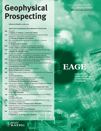
GEOPHYSICAL PROSPECTING
Advancing Geophysical Knowledge for a Sustainable FutureGEOPHYSICAL PROSPECTING is a premier journal published by Wiley, dedicated to the fields of geophysics and geochemistry. With an impressive impact factor, it holds a notable place in academic circles, boasting a ranking of Q1 in Geophysics and Q2 in Geochemistry and Petrology for 2023. The journal, ISSN 0016-8025 and E-ISSN 1365-2478, features cutting-edge research addressing key challenges in understanding the Earth's structure and processes. It has been an influential platform since its inception in 1953 and continues to converge towards its goal of disseminating integral geophysical advancements through 2024. Although not open access, researchers can benefit from its wealth of high-quality articles, substantiated by commendable rankings of 41st in Geophysics and 53rd in Geochemistry and Petrology. From its headquarters in the United Kingdom, GEOPHYSICAL PROSPECTING not only contributes to the theoretical advancement of these fields but also aids practical applications in environmental exploration and resource management, making it an essential resource for researchers, students, and professionals alike.
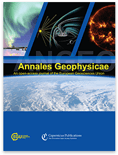
ANNALES GEOPHYSICAE
Exploring the Depths of Earth and BeyondANNALES GEOPHYSICAE is a distinguished open access journal published by COPERNICUS GESELLSCHAFT MBH, renowned for its contributions to the field of geophysics and related disciplines. Since its inception in 1996 as an open access journal, ANNALES GEOPHYSICAE has provided a vital platform for researchers to disseminate their findings covering a wide array of topics within Astronomy and Astrophysics, Atmospheric Science, and Earth and Planetary Sciences. The journal enjoys a commendable reputation, evidenced by its impressive 2023 category quartiles, ranking Q1 in Earth and Planetary Sciences (miscellaneous) and Q2 in several other relevant categories, reflecting its significance in the global research community. Based in Germany and accessible to a diverse audience, ANNALES GEOPHYSICAE serves as an essential resource for academics, practitioners, and students alike, striving to foster advancements in our understanding of geophysical phenomena and encouraging collaboration across disciplines.